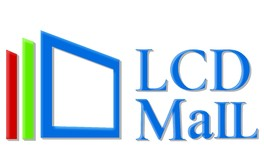how to use an lcd display - arduino tutorial
by:LCD Mall
2020-08-25
The LiquidCrystal library allows you to control LCD displays compatible with Hitachi HD44780 drivers.
There are a lot outside, you can usually be in 16-pin interface.
In this tutorial, you will learn how to use an LCD 16x2 display (and 20x4)
Uno with Arduino.
You will also learn how to use the LCD. begin(), lcd. print()and lcd. setCursor()
Functional SSO, let\'s get started!
For this tutorial you need: the parallel interface consists of the following pins: Hitachi-
Compatible LCD can be controlled in two modes: 4-bit or 8-bit. The 4-
Bit mode requires seven I/O pins from Arduino while 8-
The bit mode requires 11 pins.
In order to display the text on the screen, you can-
Bit mode, so in this tutorial we will use 4-bit mode.
The connection is easy, see the image with the schematic diagram of the breadboard circuit above.
Here is the code embedded with codebender! The lcd. begin(16,2)
Command to set the number of LCD columns and rows.
For example, if you have a LCD with 20 columns and 4 rows (20x4)
You have to change this to an LCD. begin(20x4). The lcd. print(\"--message--\")
The command prints the message to the first column and the first line of the LCD display.
The maximum length of the \"message\" must be equal to the LCD column number.
For example, the maximum length displayed for 16 columns is equal to 16, and the maximum length displayed for 20 columns is equal to 20. The lcd. setCursor(0,1)
The command sets the cursor to the first column of the second row.
If you have an LCD 20x4 and you want to print a message to columns 5 and 3, you have to use the LCD. setCursor(4,2).
Try downloading the codebender plugin, click the run button on the Arduino and program the Arduino with this sketch.
That\'s it, you have programmed for your Arduino board!
You can continue to play the game by clicking the \"Edit\" button and start making your own changes to the code.
For example, try to change the message on the first and second lines.
You have successfully completed another Arduino \"how\" tutorial and learned how to use the LCD display of Arduino uno.
I hope you like this and let me know in the comments.
They will be more so be sure to click the \"follow\" button!
There are a lot outside, you can usually be in 16-pin interface.
In this tutorial, you will learn how to use an LCD 16x2 display (and 20x4)
Uno with Arduino.
You will also learn how to use the LCD. begin(), lcd. print()and lcd. setCursor()
Functional SSO, let\'s get started!
For this tutorial you need: the parallel interface consists of the following pins: Hitachi-
Compatible LCD can be controlled in two modes: 4-bit or 8-bit. The 4-
Bit mode requires seven I/O pins from Arduino while 8-
The bit mode requires 11 pins.
In order to display the text on the screen, you can-
Bit mode, so in this tutorial we will use 4-bit mode.
The connection is easy, see the image with the schematic diagram of the breadboard circuit above.
Here is the code embedded with codebender! The lcd. begin(16,2)
Command to set the number of LCD columns and rows.
For example, if you have a LCD with 20 columns and 4 rows (20x4)
You have to change this to an LCD. begin(20x4). The lcd. print(\"--message--\")
The command prints the message to the first column and the first line of the LCD display.
The maximum length of the \"message\" must be equal to the LCD column number.
For example, the maximum length displayed for 16 columns is equal to 16, and the maximum length displayed for 20 columns is equal to 20. The lcd. setCursor(0,1)
The command sets the cursor to the first column of the second row.
If you have an LCD 20x4 and you want to print a message to columns 5 and 3, you have to use the LCD. setCursor(4,2).
Try downloading the codebender plugin, click the run button on the Arduino and program the Arduino with this sketch.
That\'s it, you have programmed for your Arduino board!
You can continue to play the game by clicking the \"Edit\" button and start making your own changes to the code.
For example, try to change the message on the first and second lines.
You have successfully completed another Arduino \"how\" tutorial and learned how to use the LCD display of Arduino uno.
I hope you like this and let me know in the comments.
They will be more so be sure to click the \"follow\" button!
Custom message

















































